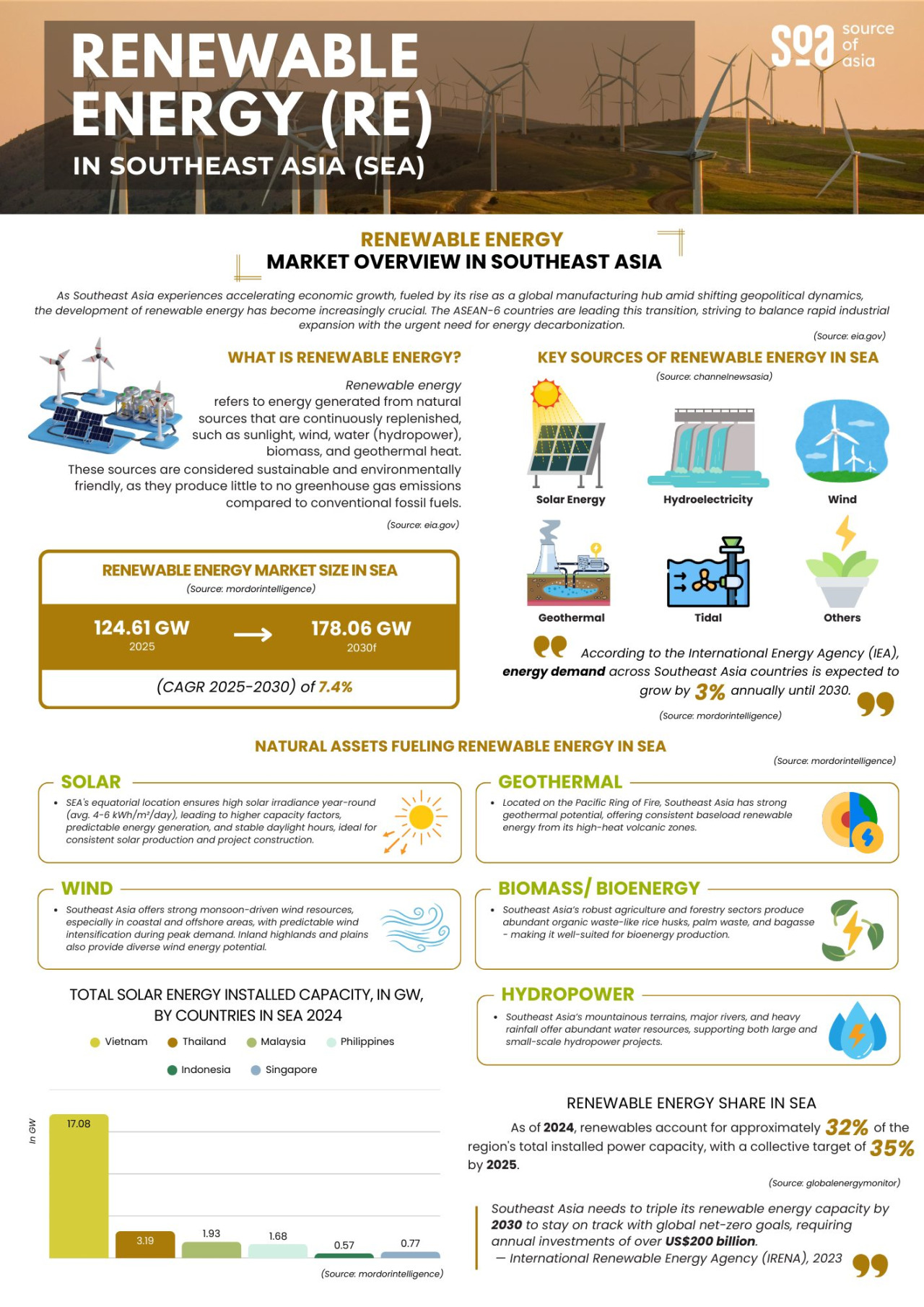Southeast Asia is emerging as a global leader in renewable energy (RE), driven by rapid economic growth and the urgent need for energy decarbonization. As the region cements its position as a manufacturing hub, the shift toward sustainable energy sources like solar, hydro, wind, and geothermal is accelerating. Our latest sectorial note dives deep into the renewable energy market in ASEAN, highlighting trends, opportunities, and the path to a greener future.
Why Renewable Energy Matters in Southeast Asia
With energy demand projected to grow by 3% annually until 2030, Southeast Asia is turning to clean energy solutions to meet its power needs sustainably. Key takeaways from our analysis include:
-
The renewable energy market in ASEAN is set to expand from 124.61 GW in 2025 to 178.06 GW by 2030, at a 7.4% CAGR.
-
Solar energy dominates, with Vietnam leading at 17.08 GW installed capacity, followed by Thailand and Malaysia.
-
Geothermal and hydropower leverage the region’s natural assets, including the Pacific Ring of Fire and abundant water resources.
-
Biomass and wind energy are gaining traction, supported by agricultural waste and monsoon-driven winds.
The Road to Net-Zero: Challenges and Investments
To align with global net-zero goals, Southeast Asia must triple its RE capacity by 2030, requiring over $200 billion in annual investments. Currently, renewables account for 32% of installed capacity, with a target of 35% by 2025.
Key Opportunities for Investors and Businesses
-
Solar power: High solar irradiance (±6 kWh/m²/day) ensures stable energy production.
-
Wind energy: Coastal and offshore areas offer strong potential, especially during peak demand.
-
Bioenergy: Abundant agricultural waste (e.g., palm waste, rice husks) fuels growth.








